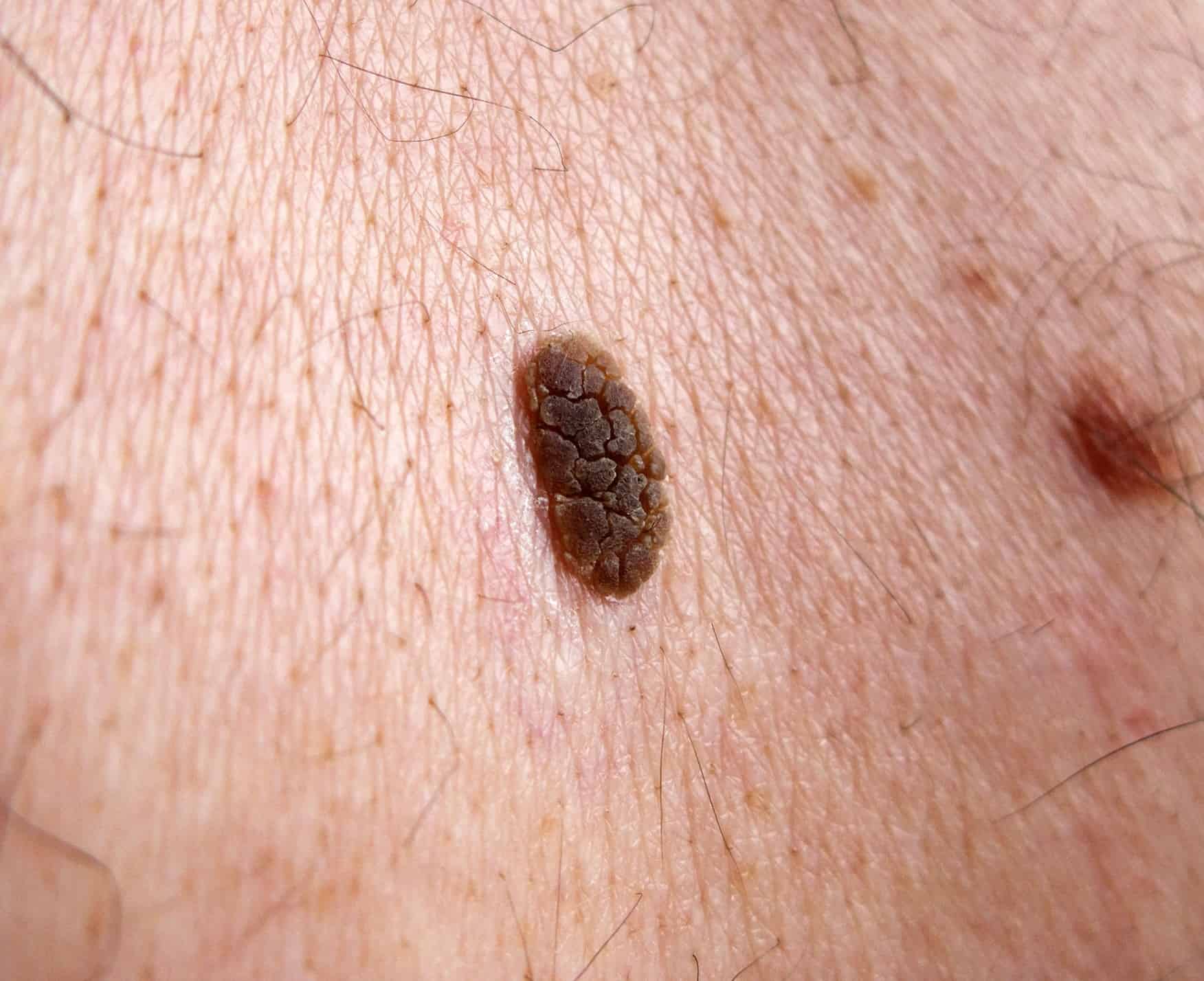Understanding Seborrheic Keratosis
 Seborrheic keratosis, you may have one of them, or maybe you have hundreds of them! So, what exactly are they? Seborrheic keratosis is a warty spot that can appear when we age. The growths aren’t harmful, but they can be unsightly. In some cases, the wart can be difficult to tell apart from a melanoma spot, which is a serious type of cancer. That’s why it’s important to get the spot checked out by a dermatologist.
Seborrheic keratosis, you may have one of them, or maybe you have hundreds of them! So, what exactly are they? Seborrheic keratosis is a warty spot that can appear when we age. The growths aren’t harmful, but they can be unsightly. In some cases, the wart can be difficult to tell apart from a melanoma spot, which is a serious type of cancer. That’s why it’s important to get the spot checked out by a dermatologist.
What Does Seborrheic Keratosis Look Like?
Seborrheic keratosis is easily identified by its appearance. A dermatologist will be able to look at the spot and determine if it is a seborrheic keratosis or a different type of skin condition. Here’s how you can tell if you have seborrheic keratosis:
Location
These spots can show up all over the body. You can find seborrheic keratosis scalp spots, chest spots, back warts, abdomen, and even the face. However, the spots don’t show up on the soles of the feet or on the palms.
Texture
The growths usually start out as small, rough areas then develop into thick, wart-like surfaces. They often look waxy and have a raised surface.
Shape
They are usually round or oval-shaped.
Color
These growths are usually brown, but can also be yellow, white, or black.
Seborrheic Keratosis Causes
Dermatologists aren’t sure why seborrheic keratosis develops. They have narrowed down some possible risk factors:
Sunlight
Lesions commonly appear on parts of the body that are more exposed to sunlight.
Genetics
Seborrheic keratosis seems to run in families. Scientists believe a genetic mutation could be responsible. The risk increases with the number of affected relatives.
Age
These spots are mostly found in people aged 50 and above.
Do I Have Seborrheic Keratosis?
A seborrheic keratosis usually looks like a waxy or wart-like growth. They can appear on the scalp, face, chest, shoulders, or back. Sometimes only one growth will appear, or you can have multiple growths close together. Here are some of the seborrheic keratosis symptoms to look for:
- The growth is light tan to brown or black
- The area is round or oval-shaped
- It looks like the growth was “pasted on”
- The area ranges in size from very small to 1 inch across
Diagnosing Seborrheic Keratosis
Usually, a dermatologist is able to diagnose seborrheic keratosis just by looking at it. If needed, a dermoscopy may be used to get a closer look at the area. If there’s any suspicion that the spot resembles a cancerous spot, then a partial shave, punch biopsy, or diagnostic excision may be done so the area can be sent to the lab.
Seborrheic Keratosis Treatment
If you don’t like the look of your seborrheic keratosis, maybe it itches, or catches on clothing, it can be removed.
Seborrheic Keratosis Removal Options
- Cryotherapy – This is when liquid nitrogen is used to freeze the lesions. The area will blister under the seborrheic keratosis and turn into a crust. Eventually, the crust will fall off, leaving the area smoother.
- Electrosurgery and curettage – During this procedure, the growth will be numbed with an anesthetic, and an electric current will destroy it, this is the electrosurgery part. During the curettage, the area will be scraped off. There’s a little bleeding involved with this procedure, but no stitches are required. In some cases, a person may only need an electrosurgery procedure or a curettage procedure. They aren’t always performed at the same time.
Get Your Seborrheic Keratosis Removed with Winston Salem Dermatology
If your seborrheic keratosis is bothering you, have it removed! Call the experts at Winston Salem Dermatology to get the spot examined. We will determine what procedure will work best to get your skin back to its smooth form. We are the Triad’s preferred dermatology and cosmetic enhancement team, so; we know how to take care of your skin. We are skilled seborrheic dermatitis treatment, removing skin spots like seborrheic keratosis. Call us at (336) 774-8636 today to see how we can restore your skin and your confidence.

